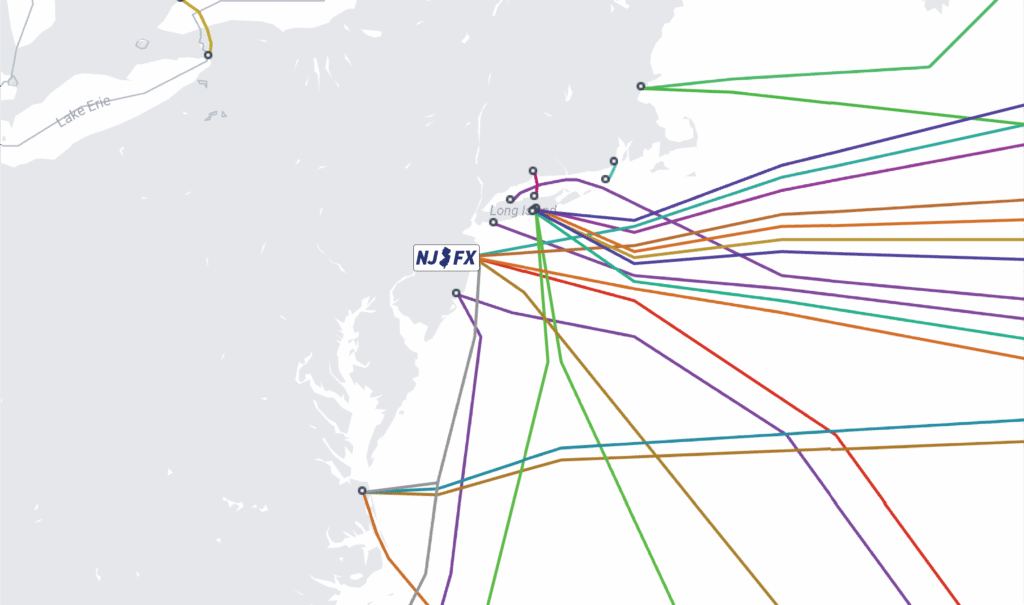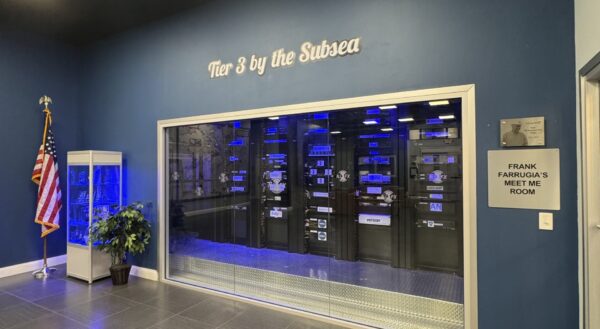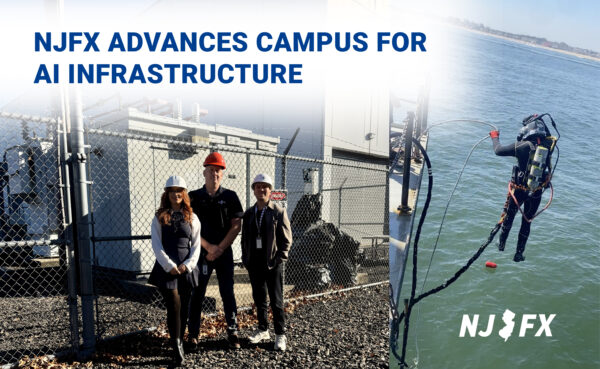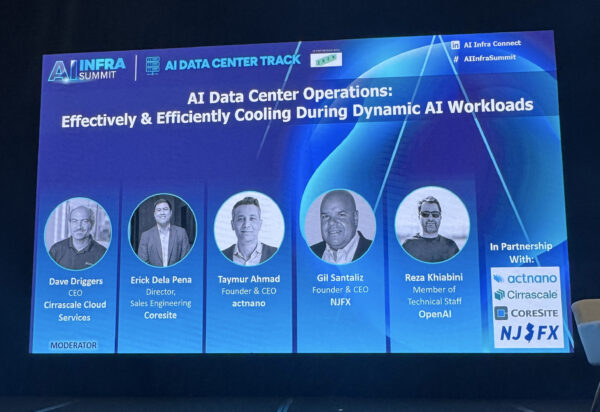Connecting Cable Landing Stations is the Future of Global Network Strategy
Cable landing stations are becoming the new interconnection hubs for global networks. Learn how direct connectivity at CLSs like NJFX enhances resiliency, lowers latency, and supports AI and cloud applications.
April 24, 2025

In today’s hyper-connected world, the role of the cable landing station (CLS) is transforming. No longer simply an access point for undersea cables, the CLS is emerging as a critical hub that networks increasingly rely on for primary connectivity. Recent industry analyses and articles reinforce this shift, underscoring how direct interconnection at CLSs drives lower latency, enhanced resiliency, and cost efficiency.
At NJFX, we have always been forward-thinking. As the first carrier-neutral CLS and colocation facility in the U.S., we’ve been empowering companies with direct, secure access to major subsea cables spanning North America, Europe, South America, and the Caribbean. Today, that model is evolving. Networks are beginning to leverage CLSs as their main point of interconnection, while still using other Points of Presence (PoPs) to ensure network diversity and redundancy.
The Shift: CLSs as Core Hubs, Not Just Edge Assets
Traditionally, network traffic would route through CLSs as a mere stepping stone before reaching larger interconnection hubs like Ashburn or Manhattan. This conventional approach often resulted in increased costs and potential bottlenecks due to long-haul backhauls. However, as noted in a recent article from TeleGeography, networks are now finding strategic advantages in establishing direct interconnection at CLSs. This direct approach not only reduces latency but also minimizes points of failure, supporting the accelerated needs of cloud and AI applications.
Complementing CLSs with Diverse PoPs
While many networks are turning to CLSs as their primary interconnection points, articles in industry publications like Light Reading highlight the value of maintaining a diverse portfolio of connectivity options. By combining the robust capabilities of CLSs with traditional PoPs spread across key markets—such as NYC, Ashburn, Atlanta, and Miami—network operators achieve several benefits:
Enhanced Redundancy: Routing traffic through multiple, diverse paths minimizes downtime and mitigates the risk of service interruption due to outages or cable cuts.
Optimized Regional Performance: Direct and localized interconnections support the bandwidth and latency requirements of today’s cloud, edge, and AI applications.
Flexible, Cost-effective Networks: Diversification permits a tailored approach where each network component is optimized for specific operational needs, ultimately driving down costs.
A comprehensive feature in Data Center Knowledge reinforces this narrative, detailing how hybrid interconnection strategies—integrating both CLS and traditional PoP solutions—are becoming best practice for global network operators who demand resilience and speed.
Why It Matters
For financial institutions, hyperscalers, content distributors, and emerging AI-powered platforms, the advantages of connecting at a CLS like NJFX include:
Direct Global Market Access: Immediate connectivity to a myriad of subsea cables expands global reach and market opportunities.
Improved Network Resiliency: The combined power of direct CLS interconnection and diversified PoPs ensures robust network continuity in the face of unexpected challenges.
Lower Latency for High-Demand Applications: Closer proximity to diverse network nodes minimizes delays, a critical advantage as applications become increasingly time-sensitive.
Cost-effective Scalability: Reducing the need for extensive backhauling directly translates into economic benefits for expanding network infrastructures.
Looking Ahead
As data volumes skyrocket and real-time applications become the norm, the network industry is undergoing rapid evolution. The direct interconnection at cable landing stations represents more than just a trend—it’s a fundamental shift in network architecture and strategy. New industry insights continue to show that the convergence of subsea connectivity with terrestrial networking infrastructure isn’t just beneficial; it’s necessary to handle the growing demands of an AI-enabled, digital-first global market.
At NJFX, we’re proud to be at the forefront of this evolution. By combining direct CLS connectivity with strategically located PoPs, we’re not just preparing for the future—we’re actively shaping it.
learn how you can Expand your Network at njfx
Reach out and talk to us today







